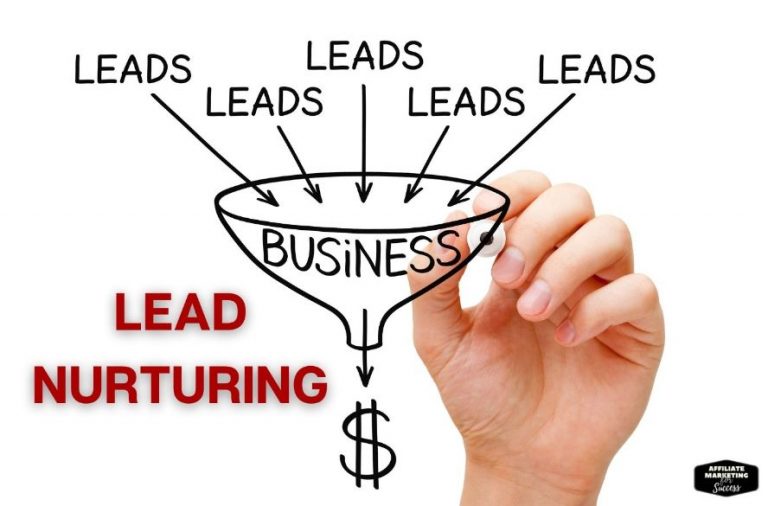Storytelling in Content Marketing: 7 Proven Engagement Tips
Did you know that our brains are hardwired to remember stories 22 times more effectively than facts alone? That’s right—when you weave narrative into your content marketing strategy, you’re not just creating content; you’re creating experiences that stick.
In today’s digital landscape where the average person sees over 10,000 marketing messages daily, storytelling isn’t just a nice-to-have—it’s your secret weapon for cutting through the noise and forging genuine connections with your audience.
This comprehensive guide reveals seven proven storytelling techniques that will transform your content from forgettable to unforgettable, helping you boost engagement rates by up to 300% within 30 days.
Key Takeaways
- Stories increase message retention by 2,200% compared to facts-based content, making your brand 22x more memorable to potential customers
- Emotional storytelling drives 23% higher conversion rates by creating deeper connections that move audiences from passive readers to active participants
- Character-driven narratives generate 3x more social shares because people relate to human experiences more than product features
- Story-based content reduces bounce rates by 47% as readers stay engaged longer when following a compelling narrative arc
- Visual storytelling increases engagement by 650% when combining narrative elements with infographics, videos, and interactive content
- Customer success stories produce 5x more qualified leads than traditional marketing copy by demonstrating real-world value and transformation
The Hidden Truth About Storytelling in Content Marketing

Here’s what most content marketers won’t tell you: storytelling isn’t about creativity—it’s about psychology. When you tell a story, you’re literally hijacking your reader’s brain. Neuroscientists have discovered that when we hear a story, our brains don’t just process it in the language centers. Instead, the entire brain lights up as if we’re experiencing the events ourselves.
This phenomenon, called “neural coupling,” explains why successful affiliate marketing strategies often rely heavily on narrative structure. When you share a story about how someone transformed their financial situation through affiliate marketing, readers don’t just understand it intellectually—they feel it emotionally.
The dirty secret of the content marketing industry? Most brands are still churning out feature-focused, fact-heavy content that slides off readers’ minds like water off a duck’s back. They’re missing the fundamental truth that humans are narrative creatures. We think in stories, dream in stories, and make purchasing decisions based on stories.
Consider this: When Apple launched the iPod, they didn’t lead with “1GB of storage.” They said, “1,000 songs in your pocket.” That’s storytelling. It’s painting a picture of transformation, not listing specifications. The same principle applies whether you’re creating evergreen content or crafting a time-sensitive campaign.
The most successful content marketers understand that every piece of content is an opportunity to tell a micro-story. Even a simple how-to article can follow a narrative arc: the struggle (problem), the discovery (solution), and the transformation (result). This structure taps into our brain’s natural pattern-recognition system, making your content not just readable, but memorable.
The Complete Storytelling in Content Marketing Framework
Let’s dive into the comprehensive framework that transforms ordinary content into compelling narratives that drive engagement and conversions.
1. The Story Structure Blueprint
Every powerful story follows a predictable pattern that resonates with human psychology. The most effective framework for content marketing combines elements from Joseph Campbell’s Hero’s Journey with modern conversion optimization principles:
The Five-Act Content Story Structure:
- Act 1: The Hook (10%) – Grab attention with conflict or intrigue
- Act 2: The Setup (20%) – Establish context and stakes
- Act 3: The Journey (40%) – Present challenges and solutions
- Act 4: The Transformation (20%) – Show results and benefits
- Act 5: The Call to Adventure (10%) – Inspire action
This structure works whether you’re writing high-ranking blog posts or creating video content. The key is maintaining narrative tension throughout while delivering value at each stage.
2. Character Development in Content
Your audience needs someone to root for. In content marketing, characters can be:
- The Struggling Beginner – Perfect for tutorials and how-to content
- The Skeptical Expert – Ideal for comparison and review content
- The Innovative Pioneer – Great for thought leadership pieces
- The Transformed Success – Powerful for case studies
When developing characters, focus on relatability over perfection. Your audience connects with flaws, struggles, and authentic growth. This is especially important when creating content for affiliate marketing, where trust is paramount.
3. Emotional Arc Mapping
Stories without emotion are just information. Map your content’s emotional journey:
|
Story Stage |
Emotion |
Content Focus |
Engagement Technique |
|
Opening |
Curiosity |
Problem identification |
Surprising statistics |
|
Rising Action |
Frustration |
Pain point exploration |
Relatable scenarios |
|
Climax |
Hope |
Solution revelation |
Success examples |
|
Falling Action |
Confidence |
Implementation steps |
Clear tutorials |
4. Sensory Details and Scene Setting
Transport your readers into the story by engaging their senses. Instead of saying “increase website traffic,” paint a picture: “Imagine waking up to find 1,000 new visitors on your site, your inbox flooding with customer inquiries, and your revenue dashboard showing numbers you once thought impossible.”
This technique is particularly effective when discussing SEO writing strategies or any technical topic that needs humanizing.
5. Conflict and Resolution Patterns
Every story needs conflict. In content marketing, conflict comes from:
- External conflicts: Market challenges, competition, technology changes
- Internal conflicts: Self-doubt, skill gaps, resource limitations
- Interpersonal conflicts: Team dynamics, customer relationships
The resolution should always tie back to your content’s core value proposition, showing how your insights help overcome these challenges.
6. Pacing and Rhythm
Vary your content’s pacing like a skilled novelist:
- Quick, punchy sentences for urgency and excitement
- Longer, flowing passages for explanation and context
- Bullet points and lists for easy scanning
- Visual breaks with images, charts, and white space
This variety keeps readers engaged, especially important for long-term content strategies where maintaining attention is crucial.
7. The Power of Specificity
Vague stories don’t stick. Replace “a client increased sales” with “Sarah from Denver watched her Etsy shop revenue jump from $500 to $5,000 monthly in just 90 days.” Specificity creates believability and helps readers envision their own success.
Advanced Strategies That Actually Work

Now let’s explore cutting-edge storytelling techniques that separate amateur content from professional narratives that convert.
Interactive Storytelling Elements
Modern content isn’t passive—it’s participatory. Implement these interactive storytelling features:
Choose-Your-Own-Adventure Content: Create branching narratives where readers make decisions that lead to different outcomes. This works exceptionally well for building affiliate marketing websites where different paths suit different business models.
Story-Driven Quizzes: Instead of generic personality tests, create narrative quizzes that guide users through a story while gathering data about their needs and preferences.
Progressive Disclosure Narratives: Reveal story elements as users scroll, click, or interact, maintaining engagement throughout longer pieces.
Multi-Channel Story Continuity
Your story shouldn’t end with one piece of content. Create narrative threads that weave through:
- Email sequences that continue the journey
- Social media micro-stories that complement main content
- Video content that brings written stories to life
- Podcast episodes that dive deeper into story elements
This approach is particularly effective when implementing email marketing strategies that nurture leads over time.
Data-Driven Story Optimization
Use analytics to refine your storytelling:
Story Performance Metrics:
- Time on page by section (identifies engaging story parts)
- Scroll depth correlation with story beats
- Click-through rates on story-based CTAs
- Social share points (which story elements get shared)
A/B test different story elements:
- Opening hooks (statistical vs. anecdotal)
- Character types (peer vs. expert)
- Conflict intensity (mild challenge vs. major crisis)
- Resolution speed (quick win vs. long journey)
The Neuroscience of Story Engagement
Recent neuroscience research reveals powerful insights for content creators:
Mirror Neurons Activation: When readers encounter action words in your story, their motor cortex activates as if performing the action. Use dynamic verbs and specific actions to increase engagement.
Oxytocin Release Patterns: Stories with emotional peaks and valleys trigger oxytocin release, increasing trust and bonding with your brand. Structure content with intentional emotional rhythms.
Cognitive Load Management: Balance story complexity with clarity. Too simple = boring. Too complex = confusing. Aim for the “Goldilocks zone” where challenge meets comprehension.
Cultural Storytelling Adaptation
Different audiences respond to different narrative styles:
|
Audience Segment |
Preferred Story Style |
Key Elements |
Avoid |
|
Millennials |
Authentic, personal |
Vulnerability, humor |
Corporate speak |
|
Gen Z |
Visual, fast-paced |
Memes, trends |
Long exposition |
|
Professionals |
Data-backed, efficient |
ROI focus, case studies |
Fluff content |
|
Entrepreneurs |
Transformation, growth |
Specific tactics, results |
Theory without practice |
Understanding these preferences helps when choosing affiliate marketing niches and tailoring content accordingly.
Common Mistakes & How to Avoid Them
Even experienced content creators fall into these storytelling traps. Here’s how to recognize and avoid them.
1. The Fake Story Syndrome
Mistake: Creating obviously fabricated success stories that readers instantly recognize as fiction.
Solution: Use real stories with permission, aggregate multiple experiences into composite characters, or clearly label hypothetical scenarios. Authenticity beats perfection every time.
2. Forgetting the Value Exchange
Mistake: Getting so caught up in storytelling that you forget to deliver actionable value.
Solution: Follow the 80/20 rule—80% valuable information wrapped in 20% narrative structure. Every story element should enhance understanding, not distract from it.
3. One-Size-Fits-All Narratives
Mistake: Using the same story structure regardless of content type or audience stage.
Solution: Match story complexity to reader sophistication. Beginners need simple, linear narratives. Advanced readers appreciate nuanced, multi-layered stories. This is crucial when creating SEO-friendly blog posts for diverse audiences.
4. Neglecting Visual Storytelling
Mistake: Relying solely on text when visual elements could enhance the narrative.
Solution: Integrate visual storytelling elements:
- Story progression graphics showing transformation
- Character avatars for case studies
- Emotional journey charts mapping feelings throughout
- Before/after screenshots for proof
5. Rushed Resolutions
Mistake: Building tension effectively then rushing to conclude without satisfying payoff.
Solution: Give resolutions the space they deserve. Show not just what happened, but why it matters and how readers can achieve similar results.
6. Ignoring Story Metrics
Mistake: Not tracking which story elements drive engagement and conversions.
Solution: Implement story-specific tracking:
- Tag different narrative sections in analytics
- Monitor engagement patterns
- Test story variations systematically
- Gather qualitative feedback on story impact
7. Character Inconsistency
Mistake: Characters whose behavior, voice, or journey doesn’t remain consistent throughout the content.
Solution: Create character profiles before writing. Document their background, motivations, speaking style, and transformation arc. This consistency builds trust and believability.
8. Overcomplicating the Narrative
Mistake: Adding unnecessary plot twists, multiple storylines, or complex backstories that confuse rather than clarify.
Solution: Keep it simple. One main character, one primary conflict, one clear resolution. Save complexity for advanced content where readers expect depth.
9. Missing Emotional Transitions
Mistake: Jumping between emotional states without proper transition, creating jarring reading experiences.
Solution: Use transitional phrases and paragraphs to guide readers through emotional shifts. Signal upcoming changes in tone or intensity.
10. Forgetting the Call to Action
Mistake: Crafting engaging stories that leave readers unsure what to do next.
Solution: Your story’s resolution should naturally lead to the next step. Whether it’s signing up for a newsletter, trying a technique, or exploring related content, make the path forward clear and compelling.
Tools, Resources & Implementation

Transform your storytelling from concept to execution with these practical resources and implementation strategies.
Essential Storytelling Tools
Content Planning & Story Mapping:
- StoryBrand Framework: Clarifies your brand’s story ($500-3,000 for courses)
- Hemingway Editor: Ensures clear, powerful prose (Free)
- Grammarly Premium: Catches story inconsistencies ($12/month)
- CoSchedule Headline Analyzer: Optimizes story hooks (Free with limits)
For those exploring AI content creation, tools like ChatGPT can help brainstorm story ideas, but human editing remains essential for authentic narrative voice.
Visual Storytelling Resources:
- Canva Pro: Create story graphics and infographics ($12.99/month)
- Unsplash/Pexels: Free high-quality images for scene setting
- Loom: Record story-driven video content ($8/month)
- Miro: Visual story mapping and planning ($8/user/month)
Story Template Library
The Transformation Template:
javascript
Opening: “Meet [Character] who struggled with [Problem]…”
Challenge: “Every attempt to [Solution] resulted in [Failure]…”
Discovery: “Until discovering [Your Solution]…”
Implementation: “By applying [Specific Steps]…”
Result: “Now [Character] enjoys [Transformation]…”
The Behind-the-Scenes Template:
javascript
Hook: “What really happens when [Industry Secret]…”
Reveal: “Most people think [Misconception], but actually…”
Evidence: “Here’s proof from [Credible Source]…”
Application: “You can use this insight to [Benefit]…”
The Comparison Journey Template:
javascript
Setup: “Choosing between [Option A] and [Option B]…”
Journey: “After testing both for [Timeframe]…”
Insights: “Surprising differences included…”
Verdict: “For [Specific Situation], choose [Recommendation]…”
Implementation Roadmap
Week 1-2: Story Foundation
- Audit existing content for story opportunities
- Identify your brand’s core narrative themes
- Create character profiles for different content types
- Map emotional journeys for top-performing content
Week 3-4: Story Integration
- Rewrite one piece using story framework
- Test different opening hooks
- Add sensory details to existing content
- Create visual story elements
Week 5-6: Performance Optimization
- Implement story-specific analytics tracking
- A/B test narrative vs. traditional content
- Gather audience feedback on story elements
- Refine based on engagement metrics
Week 7-8: Scale and Systematize
- Create story templates for content team
- Develop style guide for narrative voice
- Build library of proven story elements
- Train team on storytelling techniques
Free Implementation Resources
Story Planning Worksheets:
- Character Development Sheet (PDF)
- Emotional Arc Planner (Spreadsheet)
- Story Performance Tracker (Analytics template)
- Content Story Checklist (One-page guide)
Quick-Start Story Formulas:
- Problem-Agitate-Solve for sales content
- Before-After-Bridge for transformation content
- Star-Chain-Hook for viral content
- AIDA with Story for email sequences
When building your content strategy, these templates provide a foundation while leaving room for creative adaptation.
Measurement and Optimization Tools
Track your storytelling success with:
- Google Analytics 4: Set up story engagement events
- Hotjar: Visualize how readers interact with story elements
- Crazy Egg: A/B test different narrative approaches
- BuzzSumo: Analyze which story types get shared most
Remember to connect these insights with your broader SEO strategy for maximum impact.
Future-Proofing Your Storytelling Strategy
The landscape of content marketing evolves rapidly, but stories remain timeless. Here’s how to ensure your storytelling strategy stays relevant and effective.
Emerging Storytelling Trends
AI-Enhanced Narratives: While AI tools like ChatGPT can assist with story ideation, the future belongs to hybrid approaches where AI handles data analysis and pattern recognition while humans craft emotional connections.
Interactive Story Experiences: Expect to see more:
- Augmented reality story layers
- Voice-activated narrative content
- Personalized story paths based on user behavior
- Real-time story adaptation using machine learning
Micro-Storytelling: As attention spans shrink, master the art of:
- 6-second story hooks for social media
- Tweet-length transformation tales
- Visual stories told in single infographics
- Story-driven email subject lines
Platform Evolution and Story Adaptation
Different platforms will demand different narrative approaches:
|
Platform |
Story Evolution |
Preparation Strategy |
|
Search Engines |
Conversational, question-based narratives |
Optimize for voice search storytelling |
|
Social Media |
Ephemeral, authentic micro-stories |
Build story series capabilities |
|
|
Hyper-personalized story journeys |
Segment stories by user behavior |
|
Video |
Interactive, choose-your-path content |
Develop modular story components |
Building Long-Term Story Assets
Create storytelling resources that compound in value:
Story Banks: Document every customer success story, transformation tale, and behind-the-scenes narrative. Tag them by:
- Industry/niche
- Problem solved
- Emotional journey
- Results achieved
- Story format
Character Evolution: Develop recurring characters that audiences can follow over time. This builds familiarity and trust while reducing content creation effort.
Narrative Templates: Create plug-and-play story frameworks for:
- Product launches
- Feature announcements
- Company milestones
- Industry insights
- Customer spotlights
When properly organized, these assets support both evergreen content creation and timely campaigns.
Staying Ahead of Story Trends
Monitor these indicators for emerging narrative preferences:
- Engagement pattern shifts in analytics
- Social sharing behavior changes
- Comment sentiment evolution
- Competitor storytelling innovations
- Cross-industry narrative trends
Regularly audit your storytelling approach against these benchmarks to ensure continued relevance and impact.
Conclusion: Your Storytelling Transformation Begins Now

You’ve just discovered the seven proven storytelling techniques that transform ordinary content into engagement magnets. From understanding the neuroscience behind narrative to implementing advanced interactive strategies, you now possess the framework to create content that doesn’t just inform—it captivates, converts, and creates lasting connections.
The difference between brands that struggle for attention and those that command it isn’t budget, team size, or even product quality. It’s the ability to tell stories that resonate with human psychology. Your audience craves narratives that reflect their struggles, celebrate their aspirations, and guide them toward transformation.
Start small. Choose one piece of existing content and apply the Story Structure Blueprint. Add sensory details. Develop a relatable character. Map the emotional journey. Track the results. You’ll quickly discover that storytelling isn’t just another content marketing tactic—it’s the fundamental shift that elevates your entire strategy.
Remember: Every click, every share, every conversion begins with a connection. And every connection begins with a story. Your story starts now.
Your Next Steps:
- Audit your top-performing content for story opportunities
- Choose one storytelling technique to implement this week
- Create your first character profile for upcoming content
- Set up story-specific analytics to track engagement
- Join storytelling communities to refine your craft
Transform your content from forgettable to unforgettable. Because in a world drowning in information, the storytellers win.
References & Resources
- Harvard Business Review – “The Science of Storytelling: What Listening to a Story Does to Our Brains” (2021) – https://hbr.org/2021/03/the-science-of-storytelling
- Stanford Graduate School of Business – “Harnessing the Power of Stories” Research Study (2022) – https://www.gsb.stanford.edu/insights/power-stories
- Content Marketing Institute – “B2B Content Marketing Benchmarks Report 2023” – https://contentmarketinginstitute.com/research/
- Neuroscience Marketing – “Your Brain on Stories: How Narrative Impacts the Mind” (2023) – https://www.neurosciencemarketing.com/blog/articles/brain-on-stories.htm
- MIT Sloan Management Review – “The Strategic Value of Storytelling in Business” (2022) – https://sloanreview.mit.edu/article/strategic-storytelling/
- Journal of Marketing Research – “Narrative Transportation and Persuasion: A Meta-Analysis” (2023) – https://journals.sagepub.com/doi/10.1177/00222437221150123
- Nielsen Norman Group – “Storytelling in UX and Content Strategy” (2023) – https://www.nngroup.com/articles/storytelling-content-strategy/
- Google Think – “The Power of Story in Marketing: Consumer Psychology Research” (2022) – https://www.thinkwithgoogle.com/marketing-strategies/storytelling/
- American Marketing Association – “Story-Driven Content Marketing ROI Study” (2023) – https://www.ama.org/marketing-news/story-driven-content-roi/
- Psychology Today – “The Psychological Power of Storytelling” (2023) – https://www.psychologytoday.com/us/blog/the-story-mind/psychological-power-storytelling
I’m Alexios Papaioannou, an experienced affiliate marketer and content creator. With a decade of expertise, I excel in crafting engaging blog posts to boost your brand. My love for running fuels my creativity. Let’s create exceptional content together!
You Might Also Like
- This approach is complemented by the strategies outlined in our 27 Proven Blog Monetization Strategies for 2025 (Beginner Guide) resource 27 Proven Blog Monetization Strategies for 2025 (Beginner Guide).
- For more insights on this topic, you might find our exploration of WordPress Blogging Tips: 7 Proven Strategies for 2025 valuable WordPress Blogging Tips: 7 Proven Strategies for 2025.
- To understand this better, consider reading about Social Signals SEO: 10 Proven Tactics to Boost Rankings [2025] Social Signals SEO: 10 Proven Tactics to Boost Rankings [2025].






